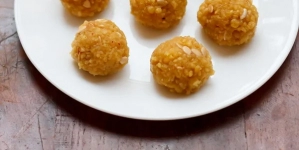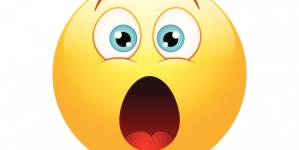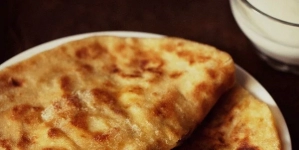-
HARARE: Shri Bramha Kumar appointed as the next Ambassador of India to the Republic of Zimbabwe - 9 hours ago
-
LONDON: Indian-Origin Principal Wins UK Legal Challenge Over School Prayer Ban - 11 hours ago
-
TORONTO: Indian-Origin Doctor Needs ₹ 2 Crore For Legal Fees. Elon Musk Responds - 1 day ago
-
KINSHASA: India-Democratic Republic of Congo Foreign Office Consultations - April 21, 2024
-
LONDON: UK Court Allows Sale Of Nirav Modi’s Luxury London Apartment - April 21, 2024
-
TEHRAN: Travel advisory for Iran and Israel - April 20, 2024
-
LUXEMBOURG: Shri Saurabh Kumar concurrently accredited as the next Ambassador of India to the Grand Duchy of Luxembourg - April 20, 2024
-
WASHINGTON: Meet Jigar Shah, Indian-American Named In TIME Most Influential List - April 20, 2024
-
LONDON: What Impact Will New UK Family Visa Rule Have On Indians - April 20, 2024
-
TORONTO: The American Dream: Why Indian Students Continue To Flock Abroad - April 19, 2024
Sambar Recipe
Ingredients
For tamarind pulp
- 1 tablespoon tamarind
- ⅓ cup hot water
For cooking dal
- ½ cup tur dal or arhar dal (pigeon pea lentils) – 100 grams
- ¼ teaspoon turmeric powder (ground turmeric)
- 1.5 to 1.75 cups water or add as required
For cooking vegetables
- 1 to 1.5 cups chopped vegetables like okra, french beans, potatoes, small round brinjals, pumpkin
- 1 to 2 drumsticks – scraped and chopped in 3 to 4 inches sticks.
- 6 to 7 pearl onions (sambar onions) or 1 small to medium onion, thickly sliced
- 1 tomato – small to medium, quartered or diced
- ¼ teaspoon turmeric powder (ground turmeric)
- ½ teaspoon kashmiri red chilli powder – optional
- salt as required
- 1.5 to 2 cups water or add as required
Important ingredient
- 1 to 1.5 tablespoons Sambar Powder
For tempering
- 2 tablespoons sesame oil (gingelly oil), can also use coconut oil or sunflower oil or ghee
- ½ teaspoon mustard seeds
- 1 to 2 dry red chillies – halved and seeds removed
- 10 to 12 curry leaves
- 2 pinch asafoetida (hing)
- 5 to 6 fenugreek seeds (methi seeds) – optional
For garnish
- 1 tablespoon chopped coriander leaves (cilantro) – optional
Instructions
Making tamarind pulp
-
Soak the tamarind in hot water for 20 to 30 minutes.
-
Once the tamarind gets soft, then squeeze the tamarind in the water itself. Discard the strained tamarind and keep the tamarind pulp aside.
Cooking lentils
-
Rinse tuvar dal a couple of times in water.
-
Drain all the water and add the dal in a 2 litre pressure cooker. Also add ¼ teaspoon turmeric powder.
-
Add 1.5 to 1.75 cups water and mix. Cover and pressure cook dal for 7 to 8 whistles or 9 to 10 minutes on medium heat.
-
When the pressure settles down on its own, open the lid and check the dal. The dal should be completely cooked and mushy.
-
Mash the dal with a spoon or wired whisk. Cover and keep aside. You can see the consistency of dal in the pic below.
Cooking vegetables
-
When the dal is pressure cooking – rinse, peel and chop the vegetables.
-
Take the chopped vegetables in a pan or pot. Also add 6 to 7 pearl onions or 1 small to medium onion (thickly sliced) and 1 small to medium tomato (quartered).
-
Sprinkle turmeric powder, kashmiri red chilli powder and salt as per taste. Adding kashmiri red chili powder is optional and can be skipped.
-
Add 1.5 to 2 cups water and stir.
-
Keep the pan on a stove top and begin to cook vegetables on a medium-low to medium flame. In between do check when the vegetables are cooking.
-
Cook till the vegetables are almost done. Ensure that you don’t over cook the vegetables.
Making sambar
-
Once the vegetables are almost cooked, then add the tamarind pulp and 1 to 1.5 tablespoons sambar powder. Mix well.
-
Add the mashed dal. Mix again very well.
-
Simmer on a medium-low heat till the sambar comes to a boil.
-
You will see a frothy layer on top when the sambar begins boiling. At this step switch off the heat. Cover and set aside.
Tempering
-
In a small pan or tadka pan, heat 2 tablespoons gingelly oil. Add ½ tsp mustard seeds.
-
Let the mustard seeds crackle.
-
Then add 1 to 2 dry red chillies (halved and seeds removed).
-
Immediately add 10 to 12 curry leaves, 5 to 6 methi seeds and 2 pinches of asafoetida (hing). Be careful as the oil splutters while adding curry leaves.
-
Fry them till the red chilies change color and curry leaves become crisp.
-
Immediately add this tempering mixture in the hot sambar.
-
Cover the pan with its lid for 4 to 5 minutes, so that the aroma and flavors from the tempering mixture gets infused with the sambar.
-
Serve sambar hot. You can garnish it with a few coriander leaves if you prefer. It can also be served with steamed rice, idli, dosa, medu vada or uttapam.
Serving Suggestions
-
Serve sambar with steamed rice, idli, dosa or medu vadai or uttapam.
-
Vary the consistency of sambar keeping in mind the dish you want to serve it with. Example – a medium to slightly thin sambar is served with idli, dosa and medu vada. Sambar with a medium to thick consistency is served with steamed rice.
Storage and Leftovers
-
Store any leftovers in the refrigerator for a day only. Note that the consistency will thicken after refrigeration. Add some water and mix to get your desired consistency while reheating in a pan.























